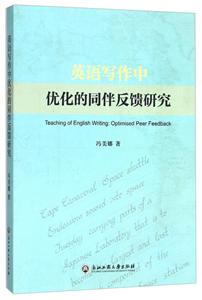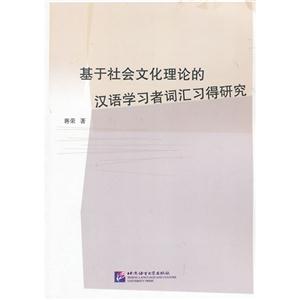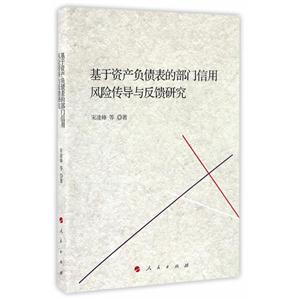
作者:卞晓云
页数:364
出版社:中国对外翻译出版有限公司
出版日期:2023
ISBN:9787500172468
电子书格式:pdf/epub/txt
内容简介
《语篇反馈研究:基于社会认知理论》这本书详述了一项关于中国外语教师语篇反馈的历史个案研究, 揭示出在中国外语教学环境下针对大学生的英语说明文,教师构建语篇反馈、学生加工语篇反馈时,他们的决策过程(decision-making)符合社会认知理论所提出的”身心世界”一体原则。在反馈过程中,教师、学生、情景之间的复杂动态交互也有助于学生作为写作者和反馈接收者在认知、情感、行为等方面实现发展。
作者简介
卞晓云,任教于中央财经大学外国语学院,研究方向为外语写作教学、教学法、教师认知、教师发展。北京外国语大学文秋芳教授“产出导向法”虚拟专业学习共同体成员,曾参与第八批中国外语教育基金项目。
本书特色
《语篇反馈研究:基于社会认知理论》这本书将提供中国英语写作教学环境视角,充实二语写作教师非纠错性的语篇反馈方面的研究。
《语篇反馈研究:基于社会认知理论》这本书有其独到的实际应用价值。随着时代的发展,尽管智能/自动反馈系统已经取得了很大的进步,但该系统主要提供的反馈还是为和语言有关的纠错性反馈,怎样能更好地提供非纠错性的语篇反馈还是该系统升级改造的一大方向。本书所探讨的教师如何提供非纠错性语篇反馈、学生如何解读加工非纠错性语篇反馈将为人工智能系统的改进和完善提供思路。
目录
Table of Contents
List of Tables …………………….. Ⅰ
List of Abbreviations…………………. Ⅲ
Chapter 1 Introduction ………………… 1
1.0 Introduction: An Overview …………….. 1
1.1 Problem Statement ……………….. 2
1.2 The Rationales Behind the Study …………… 6
1.3 Overview of Research Methodology ………… 12
1.4 Significance of the Study …………….. 13
1.5 Organization of the Book …………….. 15
Chapter 2 Issues in Teacher Feedback………….. 16
2.0 Introduction …………………. 16
2.1 Development of Teacher Feedback: Questions……… 16
2.2 Theoretical Perspectives on Teacher Feedback and Its Importance . 23
2.3 Research on Teacher Feedback…………… 44
2.4 Research Gaps and Emergent Issues…………. 68
2.5 Chapter Summary ……………….. 72
Chapter 3 Research Design ……………… 73
3.0 Introduction …………………. 73
3.1 Research Design: The Rationale ………….. 73
3.2 Research Design: Defining the Term “Case Study” ……. 74
3.3 Research Design: Key Issues …………… 80
3.4 Chapter Summary ……………….. 116
Chapter 4 The Construction of Non-error Feedback…….. 117
4.0 Introduction …………………. 117
4.1 What the Teacher Brought to the Feedback Process: Contextual
Information …………………. 118
4.2 The Entire Feedback-Constructing Process the Teacher Went Through:
Contextual Information……………… 129
4.3 The EA Issues the Teacher Actually Focused on …….. 129
4.4 Teacher Decision-Making: How the Teacher Decided Which EA
Issues to Focus on……………….. 133
4.5 The Feedback Delivery Approaches the Teacher Used ….. 136
4.6 Teacher Decision-Making: How the Teacher Decided on Feedback
Delivery Approaches………………. 144
4.7 Chapter Summary ……………….. 164
Chapter 5 The Interpretation of Non-error Feedback ……. 168
5.0 Introduction …………………. 168
5.1 What the Students Brought to the Feedback Process: Contextual
Information …………………. 169
5.2 Student A’s Acceptance and Incorporation of EA Feedback…. 177
5.3 Student B’s Acceptance and Incorporation of EA Feedback … 184
5.4 Student C’s Acceptance and Incorporation of EA Feedback … 190
5.5 How the Students’ Acceptance and Incorporation of EA Feedback
were Decided…………………. 194
5.6 Chapter Summary ……………….. 223
Chapter 6 The Feedback Process: Its Effectiveness and Helpfulness . 227
6.0 Introduction …………………. 227
6.1 Effectiveness of the Feedback Process ………… 227
6.2 Helpfulness of the Feedback Process: Student Changes ….. 234
6.3 More Helpfulness of Non-error Feedback ………. 235
6.4 Chapter Summary ……………….. 242
6.5 Summary of All Findings …………….. 243
Chapter 7 Discussion and Conclusion ………….. 245
7.0 Introduction …………………. 245
7.1 Aims and Methodology of the Study ………… 245
7.2 Summary of Key Findings ……………. 246
7.3 Contributions of the Findings …………… 249
7.4 Limitations and Future/Further Research ……….. 302
7.5 Final Remarks ………………… 306
References …………………….. 308
Appendices…………………….. 334
Appendix A: Teacher Background Interview Guide ……… 334
Appendix B: Student Background Interview Guide ……… 336
Appendix C: Think-Aloud Protocol in the Training Session…… 338
Appendix D: Teacher Retrospective and Ongoing Interviews Guide .. 340
Appendix E: Student Retrospective and Ongoing Interviews Guide .. 342
V
Appendix F: Teacher/Student Final Interview Guide …….. 344
Appendix G: Teacher Think-Aloud Data Codebook ……… 346
Appendix H: Student Think-Aloud Data Codebook ……… 350
Appendix I: Student Writing with Teacher Comments …….. 357
Appendix J: Student Writing with Teacher Comments and Student-Written
Notes ……………………. 360
Appendix K: Writing Prompts …………….. 364
节选
Teacher written feedback on second language (L2) students’writing
(hereinafter mainly referred to as “teacher feedback” for short) has been a
subject of researchers’interest since the 1980s (Bitchener & Ferris, 2012;
Ferris, 2003). However, research into it has mainly focused on the surface
level errors of student writing and there has only been a small body of research
addressing teacher feedback on non-error issues such as the organization and
content of student writing (Ferris & Hedgcock, 2014; Goldstein, 2001, 2006,
2016). This book directs its attention to non-error feedback and prioritizes
Chinese EFL (English-as-a-Foreign-Language) teachers’ feedback on the
argumentation-related issues in expository writing (hereinafter referred to
as feedback on “expository argumentation” or “EA feedback” for short,
e.g., teacher feedback on supporting evidence). By defining teacher feedback
from the sociocognitive perspective and focusing on EA feedback, this book
reports a study on the process during which teachers construct EA feedback
and students interpret that EA feedback (hereinafter mainly referred to as “the
feedback-and-interpretation process” for short). Reporting this study in this
book aims to extend the empirical, theoretical, and knowledge base of teacher
written feedback.
Specifically, the following three research questions (hereinafter referred to as
“RQ(s)” for short) were addressed in the study this book reports:
● RQ1: When constructing feedback, how does the Chinese EFL teacher
decide what EA concerns to focus on and how to deliver EA feedback?
● RQ2: When processing the teacher’s EA feedback, how does the
Chinese EFL student decide the extent to which it is accepted and
incorporated?
● RQ3: According to the student and the teacher, to what extent does the
process of constructing and interpreting EA feedback help students
improve, if it is considered effective?
This introductory chapter provides an orientation to the study this book
reports. It begins with stating the research problem (1.1). Then, the practical,
theoretical, and empirical rationales for the three RQs are explained (1.2.1–
1.2.3). Following the rationales that motivated the RQs is a description of the
research methodology (1.3), an explanation of the significance of the study
this book reports (1.4), and an outline of the organization of this book and the
composition of chapters (1.5)















